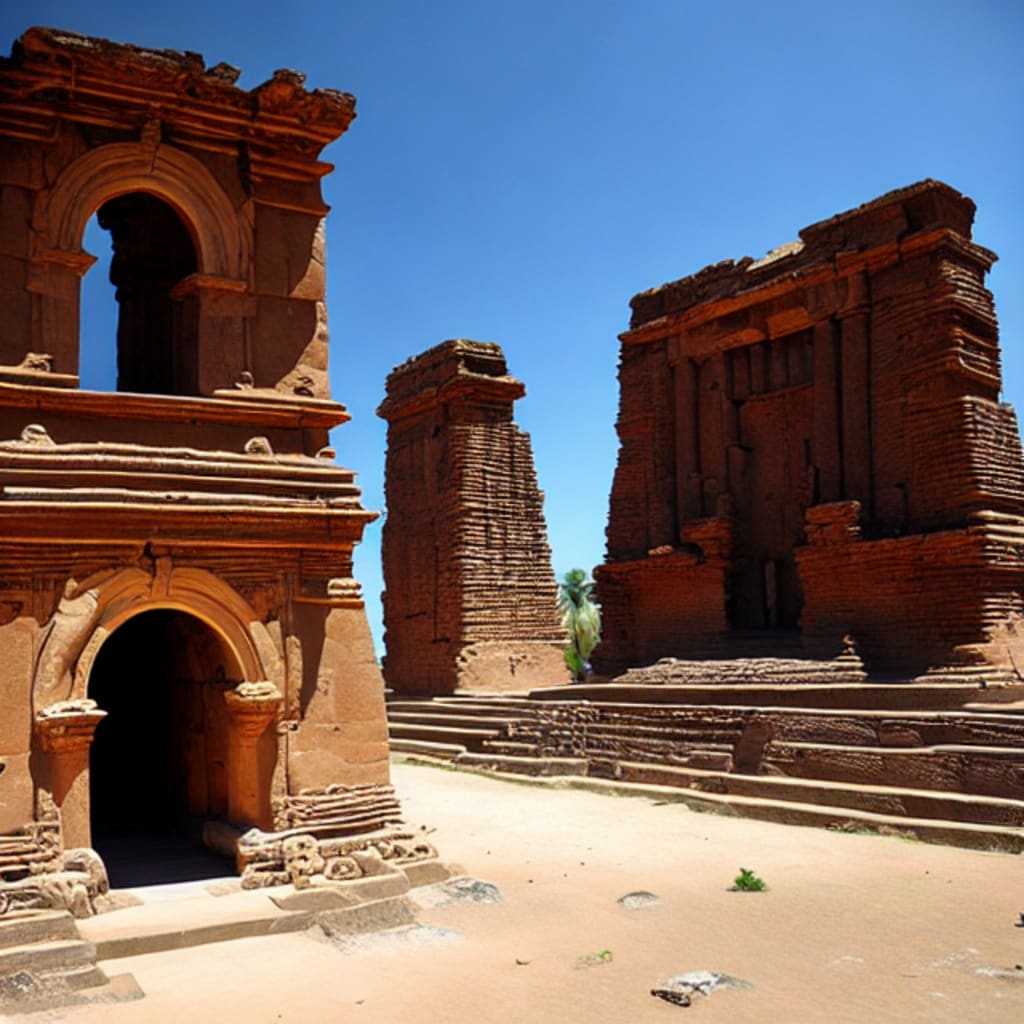Unveiling the Secrets of Ancient Civilizations
Unlocking the Mysteries of Lost Empires

The remains of long-gone civilizations provide a wealth of intriguing secrets from the ancient world. These mysterious buildings, ranging from the Egyptian pyramids to the extinct city of Machu Picchu, have captivated archaeologists, historians, and inquisitive minds for ages. In this article, we set out on an exciting quest to unravel the mysteries of ancient civilizations, illuminating their accomplishments, inventions, and unanswered questions.
1. The Great Pyramid of Giza: Engineering Marvel or Extraterrestrial Intervention
The Great Pyramid of Giza, which was constructed over 4,500 years ago during the pharaoh Khufu's reign, continues to capture people's attention all over the world. Its building methods and astronomical alignments have been the focus of extensive research and conjecture, spawning a variety of ideas, some more popular and others more fringe. I'll discuss both the accepted wisdom and a few competing views in this article regarding the building process and alignments of the Great Pyramid.
Conventional Understanding:
According to mainstream Egyptology, the Great Pyramid was constructed by skilled Egyptian workers using simple tools and techniques available during that time period. The massive structure is estimated to have been built over a span of 20 years using a workforce of tens of thousands of laborers. The primary building material was limestone, quarried locally and transported to the construction site.
To move the stone blocks into position during construction, a combination of manual labor, ramps, and sledges were probably used. A total of 2.3 million stone blocks, averaging 2.5 tons apiece, make up the main construction of the pyramid. With gaps between the stones measuring less than one-tenth of an inch, the stone cutting and fitting perfection is astounding.
Astronomical Alignments:
There are some astronomical alignments that can be seen in the Great Pyramid that point to a planned design in connection to celestial bodies. For instance, the pyramid's north-south axis lines almost exactly with true north, demonstrating a high degree of orientation precision. This alignment is thought to have been accomplished by employing plumb bobs and sighting rods along with star observations, especially of the pole star.
The pyramid's alignment with the solstices is another noteworthy alignment. On the summer solstice, the sun appears to touch the corner of the Great Pyramid as it sets perfectly between two of the surrounding pyramids. Some claim that this alignment shows the ancient Egyptians had a sophisticated understanding of astronomy and mathematics.
Alternative Theories:
Alternative explanations for the Great Pyramid's building methods and astronomical alignments have been put forth. While it's crucial to keep in mind that many of these hypotheses lack strong supporting evidence and are not generally acknowledged by mainstream academics, they cover a wide range of topics, from advanced human engineering to alien impact.
1. Advanced Ancient culture: According to certain theories, the construction of the pyramid was made possible by an advanced ancient culture that may have existed before the Egyptians and was lost to history. However, this claim is not currently backed by any strong evidence.
2. Extraterrestrial Assistance: According to a well-liked but extremely speculative belief, aliens may have provided guidance or assistance in the construction of the pyramid. Supporters of this theory cite the exact alignment, detailed design, and enormous magnitude as proof of extraterrestrial participation. However, no reliable scientific proof has been shown to support this notion.
3. Extraterrestrial Assistance: It is a widely held but highly speculative theory that aliens may have given instructions or helped build the pyramid. This theory's proponents point to the precise alignment, intricate design, and enormous magnitude as evidence of extraterrestrial involvement. However, this idea has not been supported by any credible scientific evidence.
Although contemplating these different hypotheses is intriguing, it's necessary to approach them with skepticism and carefully assess the data that supports each theory. The general consensus suggests that the Great Pyramid of Giza was mostly built by skilled human labor using the available tools and skills of its period, based on archaeological evidence and historical documents.
2. The Indus Valley Civilization: Forgotten Roots of Modern Society
A Bronze Age urban civilisation called the Indus Valley Civilization, commonly referred to as the Harappan Civilization, flourished in the Indus River Valley in what is now northwest India and Pakistan from around 2600 BCE to 1900 BCE. Archaeologists have found important finds that shed light on different facets of this ancient civilisation, including urban layout, writing system, and demise, even though there is still much that is still being argued and investigated about it.
1. Urban Planning
The Indus Valley Civilization had astonishingly well-planned towns with cutting-edge urban characteristics that were much ahead of their time. The most notable cities are Mohenjo-daro and Harappa. The streets and structures in the cities were built with a perfect north-south and east-west orientation. The cities were meticulously set out in a grid layout. The city blocks were formed by straight roadways that connected at right angles. This grid structure indicates a strong understanding of engineering and urban planning.
The cities had sophisticated drainage systems as well. Private bathrooms and even sophisticated sewage systems connected to the main drains were common in homes, indicating a high standard of hygienic maintenance. The similarity of city patterns across several sites points to a centralized authority that probably oversaw urban development.
2. Writing System
The Indus script, a distinctive writing system used by the Indus Valley Civilization, was used. Our knowledge of their written language and records is restricted because this script hasn't yet been decoded. Small soapstone seals with images of diverse animals, people, and other symbols were the main source of the writing. These seals were probably applied for official and business purposes.
The difficulty of the Indus script and the absence of a bilingual text or a well-known deciphering key have complicated numerous attempts to decode it. There is a large vacuum in our understanding of the language, literature, and historical records of the Indus Valley Civilization because the script has not yet been decoded.
The ancient world continues to captivate us with its enigmatic remains, leaving us with more questions than answers. By delving into these captivating topics, we not only unravel the mysteries of our past but also gain insights into the ingenuity, beliefs, and cultural achievements of the ancient civilizations that shaped our world.
About the Creator
Enjoyed the story? Support the Creator.
Subscribe for free to receive all their stories in your feed. You could also pledge your support or give them a one-off tip, letting them know you appreciate their work.





Comments
There are no comments for this story
Be the first to respond and start the conversation.